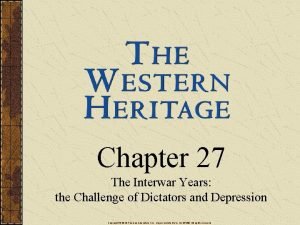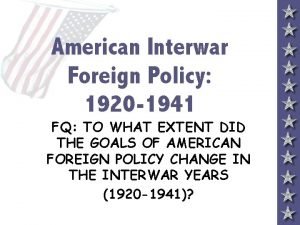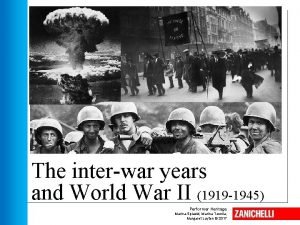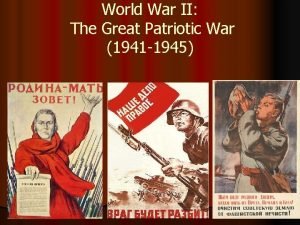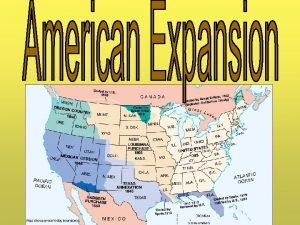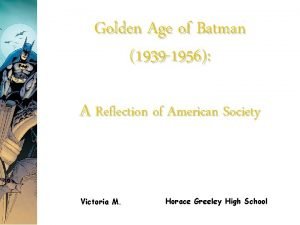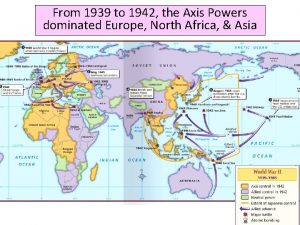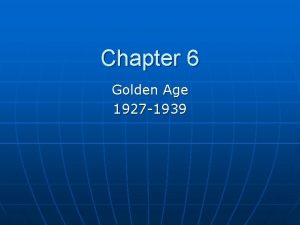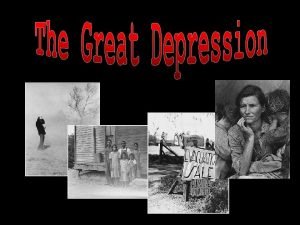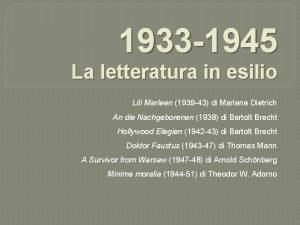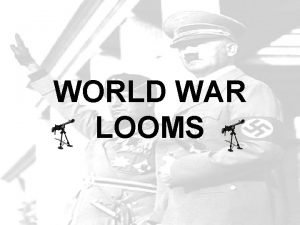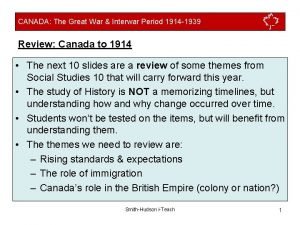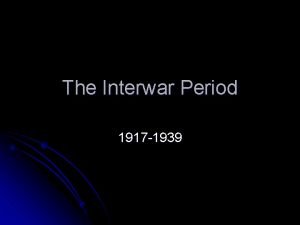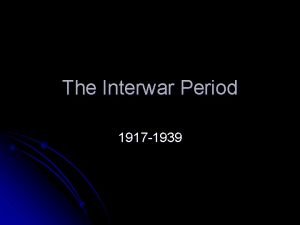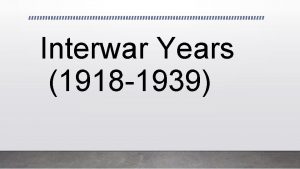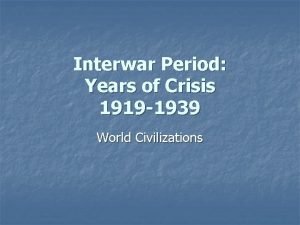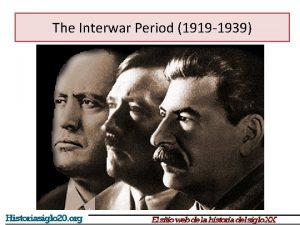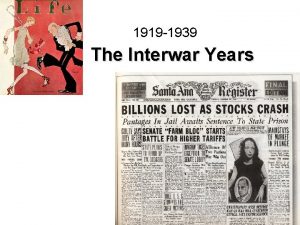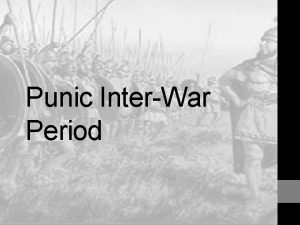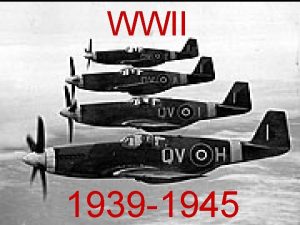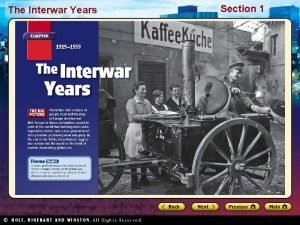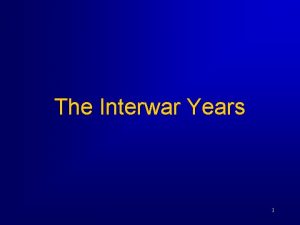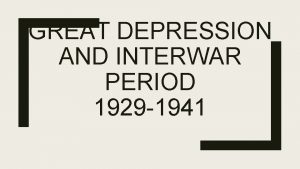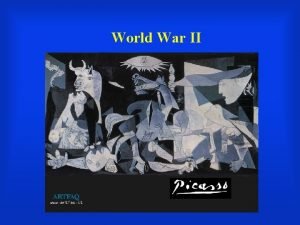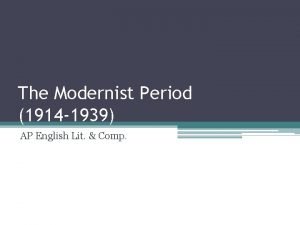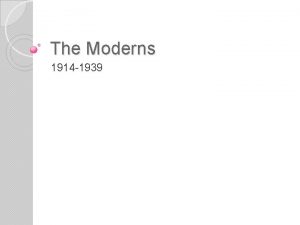CANADA The Great War Interwar Period 1914 1939



























- Slides: 27

CANADA: The Great War & Interwar Period 1914 -1939 GET READY FOR THE QUIZ! Smith-Hudson i-Teach 1

CANADA: The Great War & Interwar Period 1914 -1939 LESSON #5 QUIZ • • • Name the new leader of the Liberal Party. Name the new leader of the Conservative Party. What message did the PM send in the Chanak Crisis? What power was challenged when Canada signed the Halibut Treaty? The King-Byng Crisis set King up to campaign on what issue in the 1926 election? • The 1931 Stature of Westminster made which policy document a matter of law? • What were American owned business called? • What did the “Famous Five” do? • What did the “Group of Seven” do? • Name the Canadian sports caster from the twenties. Smith-Hudson i-Teach 2

CANADA: The Great War & Interwar Period 1914 -1939 Lesson #6: The 1930’s & The Great Depression LESSON OUTLINE & OBJECTIVES (don’t copy) In this lesson, you will study Canada’s experiences during the thirties, a decade that was witness to the biggest economic crash in our history. Students will be able to: • explain the causes of the Great Depression • Identify the components of the economic cycle • Describe the impact of the Depression on Canada • Explain the political reaction to the Depression Smith-Hudson i-Teach − 3

CANADA: The Great War & Interwar Period 1914 -1939 Lesson #6: The 1930’s & The Great Depression The Economic Cycle • Our economic system goes through positive and negative periods. Stages of this cycle are commonly referred to as: – Recession: a slowdown of economic activity – Depression: when a recession becomes severe & long-term. – Recovery: a period of growth following a recession – Prosperity: when a recovery is dramatic and sustained • In times of positive growth, rising prices eventually slow it down. • In times of negative growth, low prices soon present opportunities. • Governments try to correct recessions with low interest rates, and deficit spending. Smith-Hudson i-Teach 4

CANADA: The Great War & Interwar Period 1914 -1939 Lesson #6: The 1930’s & The Great Depression The Economic Cycle in Canadian History- APPLICATION • After World War One, we experienced a recession. • The twenties began as a period of recovery, but it lasted a long time and became a decade of prosperity. • A sharp drop in 1929 saw the beginning of a depression. • We can see the trends in history, but in each situation, nobody knew when the good times would end, how bad it would get, or how long the bad times would last. WW 1 1929 1919 1932 Smith-Hudson i-Teach 5

CANADA: The Great War & Interwar Period 1914 -1939 Lesson #6: The 1930’s & The Great Depression Causes of the Depression • Wheat prices dropped in 1927 due to overproduction. • Many industries were overproducing goods. • Stockpiles led to reductions in production & layoffs • Protectionist tariffs threatened to slow world trade. • Stocks were still rising, but early signs showed that continued growth was not possible. Cause of the Depression = Overproduction Smith-Hudson i-Teach 6

CANADA: The Great War & Interwar Period 1914 -1939 Lesson #6: The 1930’s & The Great Depression Stock Market Crash • In the Roaring 20’s, average people began investing in stocks. • Optimism & confidence led people to invest money they didn’t have yet- they believed growth was certain. • Many investors were buying on margin (speculating) and some investments were fraudulent. • Rising tariffs began to make some investors nervous. • On Black Tuesday, October 29, 1929, investors panicked & sold stock as prices dropped. • Stock exchanges in New York, Toronto & Montreal crashed. • Overnight companies and individuals were ruined, resulting in large scale unemployment. • Countries around the world fell into a deep depression Smith-Hudson i-Teach 7

CANADA: The Great War & Interwar Period 1914 -1939 Lesson #6: The 1930’s & The Great Depression Smith-Hudson i-Teach 8

CANADA: The Great War & Interwar Period 1914 -1939 Lesson #6: The 1930’s & The Great Depression Environmental Factors • Environmental conditions became hostile. • During WW 1, farmers had overworked the land, depleting the soil. • Severe drought dried out the already weakened soil Smith-Hudson i-Teach 9

CANADA: The Great War & Interwar Period 1914 -1939 Lesson #6: The 1930’s & The Great Depression • Wind storms picked up the depleted soil creating huge dust storms • Swarms of grasshoppers damaged existing crops • Many farmers abandoned their land, joining the unemployed. Smith-Hudson i-Teach 10

CANADA: The Great War & Interwar Period 1914 -1939 Lesson #6: The 1930’s & The Great Depression Results of the Depression • When the American economy crashed, so did ours • We were dependent on the US for trade • Canada relies on exports of resources. • Within a year of the crash, millions of Canadians were out of work • Gov’t relief (“pogey”) was minimal, hard to get & was a humiliating process Smith-Hudson i-Teach 11

CANADA: The Great War & Interwar Period 1914 -1939 Lesson #6: The 1930’s & The Great Depression • Homeless & unemployed people lined at soup kitchens • By 1933 - ¼ of Canada’s workforce was out of work • Unemployed “rode the rails” (freight trains), across the county, seeking work • In cities, “shantytowns” grew near rail tracks • Minorities were hard hit, with no opportunities for work or relief Smith-Hudson i-Teach 12

CANADA: The Great War & Interwar Period 1914 -1939 Lesson #6: The 1930’s & The Great Depression Era Society • Movies & radio offered an escape from daily life. • In 1936, the gov’t established CBC Radio to promote Canadian programs & challenge US influence. • French programming was very popular, but English audiences preferred US programming. Grey Owl • He was an internationally respected aboriginal environmentalist. • When he died in 1938, & it was learned that he was not native. • He was from England posed as an aboriginal. • Nonetheless, his message was well received. Smith-Hudson i-Teach 13

CANADA: The Great War & Interwar Period 1914 -1939 Lesson #6: The 1930’s & The Great Depression The Dionne Quintuplets • 1934, in Corbeil, Ont. , the Dionne family had quintuplets, the first “quints” to survive infancy. • The gov’t took custody of them, to prevent exploitation, (their father had allowed them to be displayed at a fair). • Ironically, the gov’t built a theme park, “Quintland”, around their hospital, which became Ontario’s most popular attraction, with 3 mil. visitors from 36 -43. • The girls also appeared in movies and commercials. • In 1998, Ontario paid the 3 remaining sisters $4 mil. compensation. Smith-Hudson i-Teach 14

CANADA: The Great War & Interwar Period 1914 -1939 Lesson #6: The 1930’s & The Great Depression PM King • King, like other leaders, was unprepared • He refused to fund assistance programs, claiming this was the responsibility of provincial governments • He declared he would not give a “a five cent piece” to any province that did not have a Liberal gov’t. • That attitude contributed to the Liberal loss in 1930. • King lost the 1930 election to R. B. Bennett (Cons) Smith-Hudson i-Teach 15

CANADA: The Great War & Interwar Period 1914 -1939 Lesson #6: The 1930’s & The Great Depression PM Bennett • Bennett didn’t support government assistance. • BUT, he gave the provinces $20 mil. for work projects • Bennett raised tariffs by 50%; which only encouraged other nations to do the same. • Canadian goods were locked out of international markets • The gov’t feared communists might take advantage of the situation & promote revolution • Bennett outlawed the communist party & arrested its leaders Smith-Hudson i-Teach 16

CANADA: The Great War & Interwar Period 1914 -1939 Lesson #6: The 1930’s & The Great Depression • Bennett’s inability to solve the economy made him the target of discontent – “Bennett Buggy” a car pulled by a horse – “Bennett Barnyard” a deserted prairie farm – “Bennett Blanket” a newspaper – “Bennett Coffee” roasted wheat – “Eggs Bennett” boiled chestnuts Smith-Hudson i-Teach 17

CANADA: The Great War & Interwar Period 1914 -1939 Lesson #6: The 1930’s & The Great Depression Work Camps • Bennett created work camps for the unemployed • Camps were isolated (kept unemployed out of the cities) • Worked on public projects like roads, clearing land & digging drainage ditches • Workers paid 20 cents a day plus room & board • Food & living conditions were very bad Smith-Hudson i-Teach 18

CANADA: The Great War & Interwar Period 1914 -1939 Lesson #6: The 1930’s & The Great Depression On-To-Ottawa Trek • 1935 - over 1, 000 BC camp workers left camps in protest. • From Vancouver they decided to go to Ottawa • They rode freight trains, picking up supporters on the way Smith-Hudson i-Teach 19

CANADA: The Great War & Interwar Period 1914 -1939 Lesson #6: The 1930’s & The Great Depression On-To-Ottawa Trek • The RCMP stopped them in Regina, allowing only the leaders to continue • The rest of the protesters were put in a stadium in Regina • The leaders met with an angry Bennett, who promptly threw them out of his office. • The RCMP had orders to clear the Regina stadium. • The trekkers resisted, 1 police officer died, 130 were arrested. Smith-Hudson i-Teach 20

CANADA: The Great War & Interwar Period 1914 -1939 Lesson #6: The 1930’s & The Great Depression The United States • Like King, Pres. Hoover was unprepared & took much of the blame (shantytowns = “Hoovervilles”) • He was defeated in the 1932 election by Roosevelt • Roosevelt supported Keynesian theory- gov’t should spend to improve the economy (deficit spending). • Many were skeptical- it sounded like communism • Roosevelt introduced a program called “The New Deal” • It created public work programs & regulatory agencies. • The New Deal didn’t stop the depression, but it did improve confidence. Smith-Hudson i-Teach 21

CANADA: The Great War & Interwar Period 1914 -1939 Padlock Law • The Act was to protect the Province of Quebec against Communistic Propaganda • Passed in March of 1937 • The Act made it illegal to print, publish or distribute communist or bolshevism propaganda • If you break the law, a ‘padlock’ will be placed on the residence • In 1957 the law was found to be unconstitutional and was removed. Smith-Hudson i-Teach 22

CANADA: The Great War & Interwar Period 1914 -1939 Lesson #6: The 1930’s & The Great Depression Protest Parties • Politicians wrestled with “laissez-faire”, vs. Keynesian theory • People, growing frustrated; were willing to accept non traditional alternatives. • From this grew new parties, referred to as “Protest Parties” • They usually have rural origins and grow out of discontent. Smith-Hudson i-Teach 23

CANADA: The Great War & Interwar Period 1914 -1939 Lesson #6: The 1930’s & The Great Depression The CCF (Co-operative Commonwealth Federation) • 1932, J. S. Woodsworth convinced Labour, Progressives & Farmers to join one Socialist party, the CCF. • 1933 at their first National Convention, passed the Regina Manifesto, a document stating their aims – (the CCF‘s) purpose is the establishment…of a Cooperative Commonwealth in which the principle regulating production, distribution and exchange will be the supplying of human needs and not… profits. • The CCF had a strong start, but leveled out by 1934 • CCF formed the base of the NDP in the 60’s Smith-Hudson i-Teach 24

CANADA: The Great War & Interwar Period 1914 -1939 Lesson #6: The 1930’s & The Great Depression Social Credit • 1932 - Social Credit party was started by “Bible Bill” William Aberhart, a radio preacher. • He claimed poverty resulted from the difference in the price paid by the consumer & the price paid to the producer. • He wanted to pay people a “social credit” of $25/month • 1935 - Alberta elected a Social Credit provincial gov’t • The Supreme Court prevented credits being paid, but the party remained in power in Alberta until 1971. • Social Credit did not become popular outside of Alberta, (an unrelated right wing BC party used the name in the 70’s and 80’s). Smith-Hudson i-Teach 25

CANADA: The Great War & Interwar Period 1914 -1939 Lesson #6: The 1930’s & The Great Depression Election of 1935 • Bennett was unable to end the depression, and even tried his own “New Deal” reforms; many were challenged as unconstitutional. . • The Liberals campaigned on the slogan “King or Chaos” • King won a strong majority (171/39/17/7/11) • King’s reforms, however, had little success. • Federal-provincial relations grew strained. Smith-Hudson i-Teach 26

CANADA: The Great War & Interwar Period 1914 -1939 Lesson #6: The 1930’s & The Great Depression POSSIBLE QUIZ QUESTIONS NEXT CLASS • • • What was the central cause of the Depression? What day was Black Tuesday? By 1933, what percentage of Canadians were unemployed? What do you call temporary villages for transients? Who was the “First Nations” environmentalist? Who were the celebrity babies in Ontario in the thirties? What wouldn’t King give to a province without a Liberal gov’t? Name one thing named for Bennett’s inability to solve the depression? Where were the “On-to-Ottawa” trekkers held? What socialist party put their policies in the “Regina Manifesto”? “Bible Bill” started what party? What name did Bennett & Roosevelt used for their economic programs? 27 Smith-Hudson i-Teach
 Interwar period timeline
Interwar period timeline Chapter 27 the interwar years
Chapter 27 the interwar years Interwar america
Interwar america Prism net
Prism net The interwar years zanichelli
The interwar years zanichelli Interwar america
Interwar america Great patriotic war period
Great patriotic war period Maine vs canada war
Maine vs canada war Italy population 1939
Italy population 1939 Fashion 1930 to 1940
Fashion 1930 to 1940 Revolutionary leaders 1900-1939
Revolutionary leaders 1900-1939 Poland population 1939
Poland population 1939 Varför kallas perioden 1918-1939 för mellankrigstiden?
Varför kallas perioden 1918-1939 för mellankrigstiden? The golden age (1939-1956)
The golden age (1939-1956) Germania nazista harta
Germania nazista harta Who dominated europe, north africa and asia from 1939-1942?
Who dominated europe, north africa and asia from 1939-1942? Golden age of aviation 1927-1939
Golden age of aviation 1927-1939 1939 market crash
1939 market crash Mapamundi 1939
Mapamundi 1939 Casablanca movie map
Casablanca movie map 18. testu iruzkina
18. testu iruzkina Biographie de callista roy
Biographie de callista roy Adam osborne laptop
Adam osborne laptop Bahn signallampe 1939
Bahn signallampe 1939 Henri matisse la musique 1939
Henri matisse la musique 1939 Lili marleen 1939
Lili marleen 1939 1939
1939 St. louis ship 1939
St. louis ship 1939

